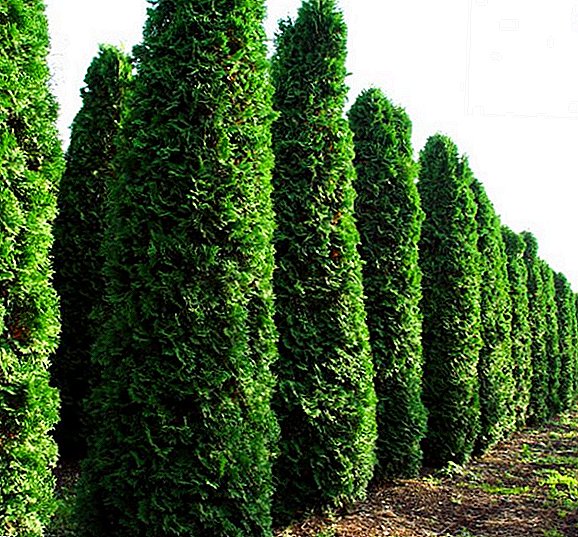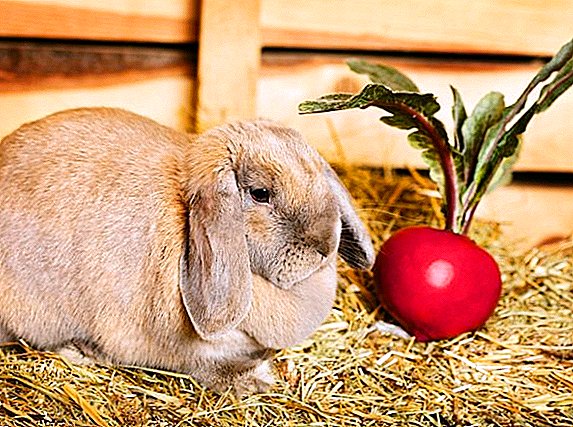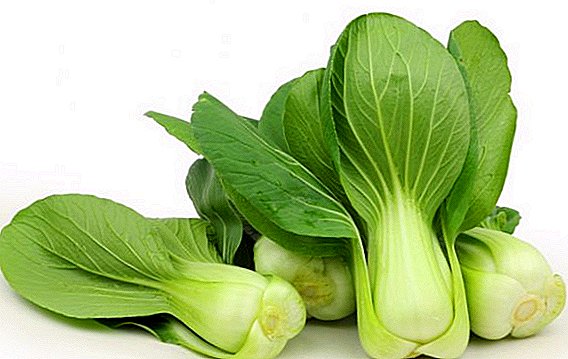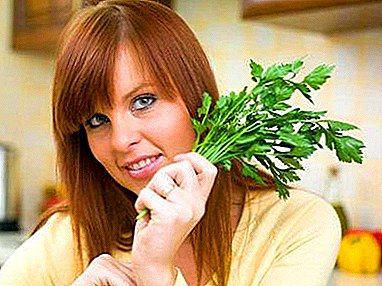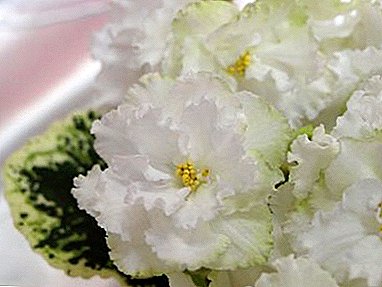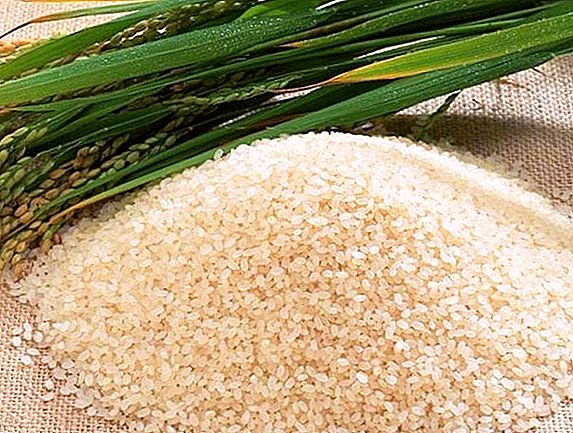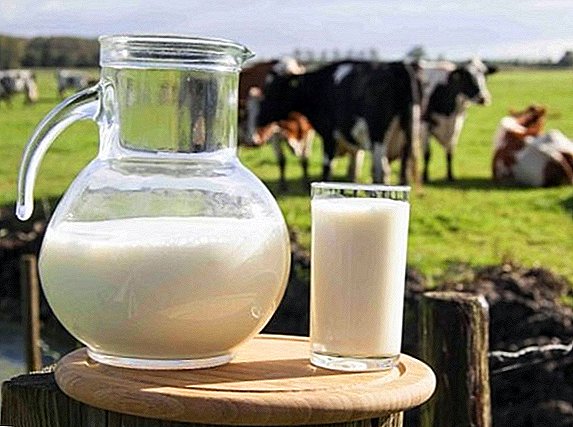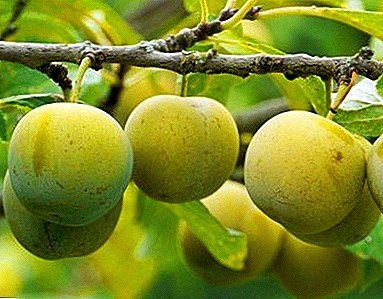
Plum "Renklod collective farm" - is an old and well-known variety, which is still in demand in gardening. And it is no coincidence, because it has outstanding winter hardiness, which is very important for growing plums in Russian latitudes.
In addition, "Renklod collective farm" is famous for high and stable yields. And caring for him does not represent special difficulties.
Description plum "Renklod collective farm"
Plum "Renklod kolkhoz" refers to a group of home-made plum varieties with early fruit ripening. It is a tree with an average growth force, reaching 3 m in height.
Plum crown sprawling and not very thick. The bark on the tree trunk is smooth and painted gray. On the red-brown shoots in a small amount there are lentils.
Light green smooth foliage has an average size. The shape of the leaf plate is medium elliptical with a wavy edge. Plum flowers are small and white in color.
The weight of the round-shaped plum "Renkoda collective farm" ranges from 18 to 24 g. The color of the fruit is yellow with a slight greenish tint. Under the thin skin on the entire surface of the fetus there is a large number of gray subcutaneous points. The yellow flesh of the fruit is juicy with a very delicate structure of medium density. A small bone is easily separated from the pulp.
Fruits have a sweet, slightly sour taste.. A slight bitterness of the skin gives it a subtle shade. The sugar content in fruits is 8.9%, and the acidity is 1.4%. With a professional tasting plum received a score of 4 points.
The table variety "Renklod collective farm" is very tasty fresh and is great for canning. Juices, compotes, jams, marmalades, jams and marmalade are made from it.
Photos of plum varieties "Renklod collective farm" see below:


Breeding history and breeding region
 The creator of the "Renklod collective farm" is Ivan Vladimirovich Michurin himself. For a new plum scientist crossed the "Ternoslivu" and the variety "Green Lack green."
The creator of the "Renklod collective farm" is Ivan Vladimirovich Michurin himself. For a new plum scientist crossed the "Ternoslivu" and the variety "Green Lack green."
The result was a variety with remarkable characteristics, featuring good yield and excellent winter hardiness.
"Renklod collective farm" in 1947 was entered into the State Register and recommended for cultivation in the Central Black Earth, Central and North-West regions of Russia.
Characteristics of a variety
"Renklod collective farm" is characterized by high and stable annual yields. This is a skoroplodny variety, giving the first harvest for 4 or 5 years of life.
A six-year tree of the “collective farm collective farm” produces from 6 to 8 kg of fruit, an eight-year tree from 9 to 18 kg, and an eleven-year tree from 39 to 51 kg. Plums ripen together in the second half of August. From the severity of the harvest, the branches of the tree hang down strongly and over the years it acquires a flat crown.
The variety has one drawback - when overriding, its fruits are prone to shedding. Therefore, it is advisable not to delay harvesting.
Frost resistance plums "Renklod collective farm" above lauding. In normal winter, flower buds do not freeze slightly. In especially severe winters, freezing of small branches and freezing of wood are observed. However, after a couple of years, the trees are restored and continue to produce good yields.
Another advantage of the variety "Renklod collective farm" - he is not afraid of temperature changes. The smooth trunk of a tree is not damaged by freezers and sunburns.
“Renklod collective farm” is self-explosive, therefore it needs pollinator varieties. At the same time, he is not able to interbreed with a Chinese plum. For better pollination "Renklod collective farm" requires at least two varieties from the group of home plums.
Perfectly suitable "Red-rimming", "Renklod thorny", "Hungarian Moscow", "Volga Beauty", "Eurasia 21", "Hungarian Pulkovo", etc.
Planting and care
 In mid-latitude plum usually planted in spring. When planting in the fall, most often the trees do not have time to take root and grow strong, so in winter they often freeze.
In mid-latitude plum usually planted in spring. When planting in the fall, most often the trees do not have time to take root and grow strong, so in winter they often freeze.
If it really happened that the sapling was purchased in the fall, you can prikat it in the garden, cover it with pine spruce branches, and sprinkle it with snow as winter approaches. Thus, the warmed tree perezimuet well until spring.
For plum planting should choose a sunny place, always protected from strong and cold winds. Ideally, this should be the southern or southeastern part of the garden. It is desirable that while high pears and apples do not priteni plum.
Sandy or loamy soil with a pH of 6.5 to 7.0 is best for plums. Groundwater should be 1.5 m below ground level.
The pit should be prepared a couple of weeks before the scheduled work, and preferably in the fall. The diameter of the pit should be from 60 to 80 cm, depth - 50 cm, and the scheme of planting several plum seedlings - 3 to 3 meters.
Fertile soil is prepared before planting. For this, from 7 to 10 kg of compost or humus and some wood ash (about 100 g) are brought into the ground taken out of the pit. If the soil is acidic, you can add about 50 g of lime-fluff to the mixture. If desired, organic matter can be replaced by mineral fertilizers - 200 g of superphosphate and 80 g of potassium sulfate. The fertile mixture is well mixed and fill the pit with it.
Before planting a plum, In the center of the pit they drive in a wooden stake for tying. Further, in the center of the pit, they fill in an earthen mound, place a young plum on it and evenly distribute the roots around the embankment.
Make sure that the peg is on the south side of the tree. Then the pit is filled with a fertile mixture, gently shaking the tree so that the earth fills all the voids in the roots.
When planting, it is important to ensure that the root neck is 5-6 cm above the soil surface. At the end of the planting works around the trees, they make a groove for watering and spill the earth with two or three buckets of water. Next, the seedling is tied to a peg, and the soil is mulched. After a couple of weeks in dry weather, watering is repeated.
Further care for the plum involves the following activities:
 Watering. Plum can be called the most moisture-loving tree of all fruit crops. With a lack of water in the soil its fruits crack, and the leaves turn yellow and fall off. In the dry season, the plant needs from 3 to 5 heavy irrigation. Young plums require from 4 to 6 buckets of water per tree, and fruit-bearing ones - from 8 to 10. Watering is considered sufficient if the ground is moistened 40 cm deep. To retain moisture, the trunk circle is mulched with humus or compost.
Watering. Plum can be called the most moisture-loving tree of all fruit crops. With a lack of water in the soil its fruits crack, and the leaves turn yellow and fall off. In the dry season, the plant needs from 3 to 5 heavy irrigation. Young plums require from 4 to 6 buckets of water per tree, and fruit-bearing ones - from 8 to 10. Watering is considered sufficient if the ground is moistened 40 cm deep. To retain moisture, the trunk circle is mulched with humus or compost.- Loosening. Pristvolnuyu area under the plum should be regularly loosen and free from weeds, and dig in the fall. In addition, it is important 4 or 5 times per season to remove root shoots, significantly reducing the yield of plums.
- Top dressing. Fertilize plum can be a year after planting. Every three years in the fall organic matter is introduced in the form of humus or compost at the rate of half a bucket per square meter. Here you can add superphosphate (50 g) and potassium sulphate (20 g). In the spring, before the beginning of flowering, 20 g of ammonium nitrate are introduced per square meter of the tree surface.
- Crop. At a young age, the plum needs formative pruning. In the annual seedlings 4-6 skeletal branches are left with a distance of about 40 cm between the tiers. Then for 3 or 4 years each spring, the main branches are shortened by a third. In the future, plum trees need only sanitary pruning. The crown is thinned every year, diseased, damaged and non-fruiting branches are removed.
- Preparing for the winter. "Renklod collective farm" is famous for its winter hardiness. However, its young trees are not yet sufficiently hardened and extremely sensitive to low temperatures. Therefore, for the winter they need to be warmed. Before the onset of cold weather, seedlings are covered first with a layer of sawdust, and then fir tree branches. According to another method, trees are lined with poles in the form of a hut and straw, hay or straw mats are laid over this structure. Then the building is tied with a rope. Fallen snow layer will create additional protection from frost and cold winds.
Diseases and pests
"Renklod Collective Farm" is not susceptible to homozy (comedy) and rarely suffers from fungal infections. In order to completely eliminate possible ailments, preventive measures are taken.
The affected shoots are cut, diseased fruits and leaves are destroyed. When pruning trees, sections and cracks are disinfected with lime milk with the addition of copper sulfate to it.
In early spring, before foliage blooming and autumn after leaf fall, treatment with Bordeaux liquid or other fungicides. In addition, in the fall, the plum is sprayed with a solution of urea against cholesterol.
Chemical processing of plum trees should be carried out no later than a month before harvesting.
The most dangerous pests "Renkoda collective farm" - plum sawfly and plum moth.
 Against the sawfly in spring, even before flowering, trees are treated with Karbofos, Chlorophos, Cyanox or Cydial. With a large accumulation of insects after flowering, processing is repeated. During the fruiting period, trees shake off the damaged plums containing the pest larvae and destroy them.
Against the sawfly in spring, even before flowering, trees are treated with Karbofos, Chlorophos, Cyanox or Cydial. With a large accumulation of insects after flowering, processing is repeated. During the fruiting period, trees shake off the damaged plums containing the pest larvae and destroy them.
Against plum moths Biological preparations Bitoxibacillin, Gaupsin and Lepidocide are effective. It is carried out at least 4-6 treatments with an interval of 10 days. Application of trapping belts, pheromone traps, loosening, digging the soil and collecting carrion are also measures to combat the codwort.
As you can see, "Renklod collective farm" - this is a great plum, in its merits is not inferior to many modern varieties. With proper care, every year you can collect an excellent harvest of delicious fruits with a rare and unforgettable taste.


 Watering. Plum can be called the most moisture-loving tree of all fruit crops. With a lack of water in the soil its fruits crack, and the leaves turn yellow and fall off. In the dry season, the plant needs from 3 to 5 heavy irrigation. Young plums require from 4 to 6 buckets of water per tree, and fruit-bearing ones - from 8 to 10. Watering is considered sufficient if the ground is moistened 40 cm deep. To retain moisture, the trunk circle is mulched with humus or compost.
Watering. Plum can be called the most moisture-loving tree of all fruit crops. With a lack of water in the soil its fruits crack, and the leaves turn yellow and fall off. In the dry season, the plant needs from 3 to 5 heavy irrigation. Young plums require from 4 to 6 buckets of water per tree, and fruit-bearing ones - from 8 to 10. Watering is considered sufficient if the ground is moistened 40 cm deep. To retain moisture, the trunk circle is mulched with humus or compost.